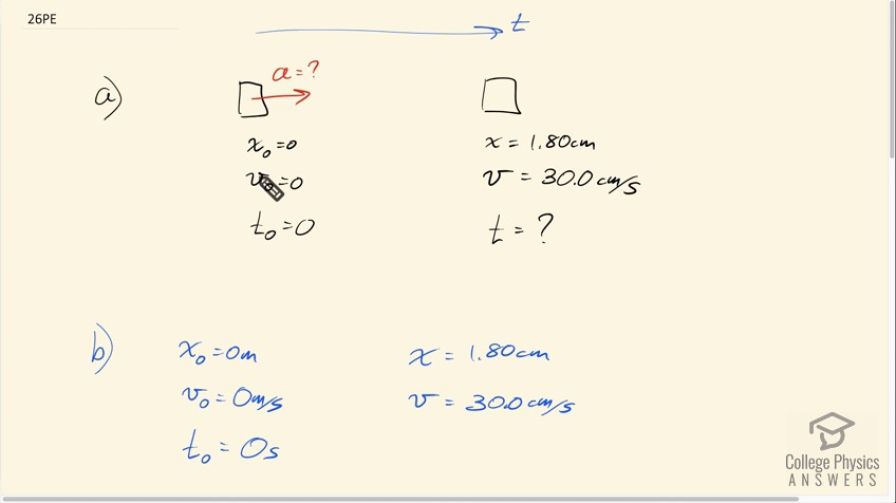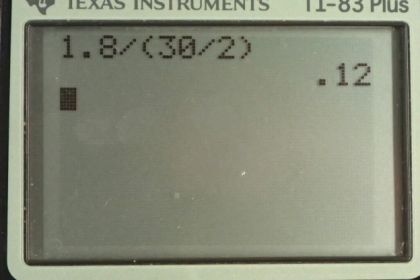Question
Blood is accelerated from rest to 30.0 cm/s in a distance of 1.80 cm by the left ventricle of the heart. (a) Make a sketch of the situation. (b) List the knowns in this problem. (c) How long does the acceleration take? To solve this part, first identify the unknown, and then discuss how you chose the appropriate equation to solve for it. After choosing the equation, show your steps in solving for the unknown, checking your units. (d) Is the answer reasonable when compared with the time for a heartbeat?
Final Answer
- Please see the solution video
- , , , ,
- Yes, the answer is reasonable compared to the duration of a single heart pulse.
Solution video
OpenStax College Physics, Chapter 2, Problem 26 (Problems & Exercises)

vote with a rating of
votes with an average rating of
.
Calculator Screenshots
Video Transcript
This is College Physics Answers with Shaun Dychko. We begin by drawing a picture to illustrate a piece of blood that's being pumped by the heart and initially, we'll take time, t naught, to be 0; the initial speed is 0 and the initial position we'll take to be 0 and it has some acceleration which we don't really know and then sometime later, we are told that the final speed will be 30 centimeters per second at a position of 1.80 centimeters and we don't know how long that takes. So part (b) says write down the things we know so we write down all the stuff that we know here and I always start questions off this way anyhow and you should as well by writing down all the things that you know and a picture also helps so that's a good problem solving strategy. Part (c) says how long does it take for the heart to pump the blood 1.80 centimeters from rest to a final speed of 30 centimeters per second? So that means the unknown is t; how long means well, how much time and so we need to choose a formula that has the things that we know plus the letter t in it— the thing that we want to find— and equation 50 fits that description. Although we don't strictly know what the average velocity is but we have another formula, equation 51, to figure that out. So we are gonna solve this formula for t here so equation 50 rearranged by subtracting x naught from both sides and then switching the sides around gives you this line here so v bar t equals final position minus initial position and then we solve this for t by dividing both sides by average velocity and we have t is the final position minus the initial position divided by the average velocity. Now this average velocity, we need to replace it with this formula and we do that here and I always show substitution's in red here. So we have v naught plus v over 2 in place of v bar and then we plug in the numbers. So that's 1.80 centimeters minus 0 centimeters— that's the final position minus the initial position— divided by the initial speed plus the final speed of 30 centimeters per second divided by 2; this gives a time of 0.120 seconds. Now pay attention to your units, these are unusual units most of the time you want to change units into meters, kilograms or seconds— that's mks units— but in this case, it's okay to leave them as centimeters because we have centimeters on the top and centimeters on the bottom and so they will cancel and that will work out nicely to units of seconds for our time. And this answer does seem reasonable compared to the duration of a heart pulse; if you put your finger on your wrist and feel your pulse, you can imagine that it might last for about 0.120 seconds.

